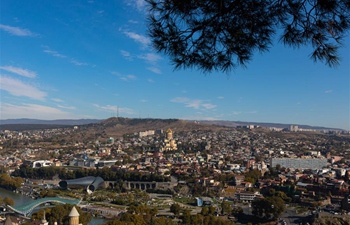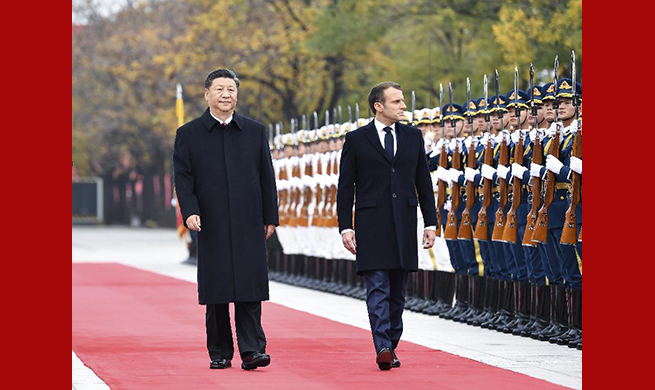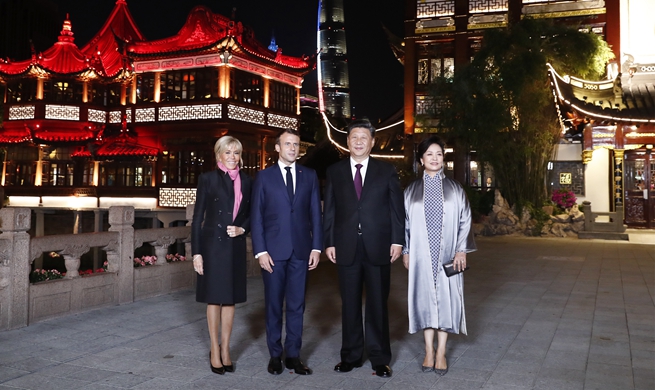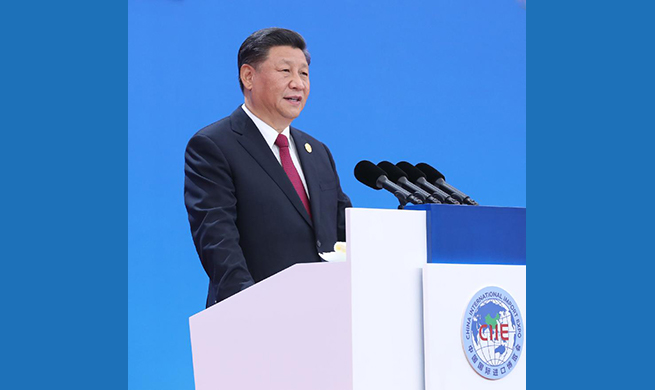MANILA, Nov. 7 (Xinhua) -- After two quarters of deceleration, the Philippine Statistics Authority (PSA) said on Thursday that the Philippine economy surged to 6.2 percent in the third quarter of 2019.
PSA head Claire Dennis Mapa reported a gross domestic product (GDP) growth of 6.2 percent from 5.6 percent in the year's first quarter and a slightly slower 5.5 percent in the second quarter.
Mapa said trade and repair of motor vehicles, motorcycles, personal and household goods; construction; and financial intermediation were the main drivers of GDP growth for the quarter.
Among the major economic sectors, Mapa said services posted the fastest growth with 6.9 percent. Industry grew by 5.6 percent, while agriculture, hunting, forestry and fishing registered a growth of 3.1 percent, he added.
Socioeconomic Planning Secretary Ernesto Pernia said the 6.2-percent growth in the third quarter brings the year-to-date economic growth to 5.8 percent, just slightly below the lower-end of the 6.0 to 7.0 percent full-year 2019 growth target of the government.
"This means that the Philippine economy will have to expand by at least 6.7 percent in the last quarter of the year to meet the low-end of the full-year target of 6.0 to 7.0 percent for 2019 - a challenge that we are confidently taking on," Pernia said.
Pernia said the stronger growth in public spending in the third quarter contributed significantly to the economy's third quarter performance, adding that the private sector is a timid participant in the economic growth.
"We know that the private sector is the main driver of the economy, with the government providing an enabling policy environment and infrastructure. That is why we need to address infrastructure, logistics and regulatory bottlenecks," Pernia added.
Compared with other major emerging market economies in the region that have already released their third quarter 2019 GDP numbers, Pernia said the Philippines likely ranked second behind Vietnam's 7.3 percent, but higher than India's expected quarter growth of below 6.0 percent, and Indonesia's 5.0 percent for the period.
"As we can see, the Philippine economy has been steadily growing for the past three years," Pernia said, adding the government "expects to sustain this momentum in the following years and cement the Philippines' standing as one of the fastest-growing economies in Asia."
Finance Secretary Carlos Dominguez also expressed optimism that full-year economic expansion could hit the lower band of the official growth forecast of 6.0 to 7.0 percent.
Dominguez foresees an even better pickup in growth momentum in the year's last quarter and into 2020, as the government meets its catch-up spending program before the yearend.
"What the Philippines has shown is its strength, stability and resilience in the face of adverse conditions such as the global economic slump and the local budget delay," he said.
Dominguez believes full-year Philippine economic expansion could hit at least 6 percent, while the International Monetary Fund (IMF) projects an average 2019 growth of just 5.0 percent for the entire Asia and a lower 4.6 percent for Southeast Asian economies.
In an update of its flagship annual economic publication, Asian Development Outlook (ADO) 2019, released in September, ADB revised its forecast for Philippine GDP growth to 6.0 percent in 2019 and 6.2 percent in 2020, against its previous forecast of 6.4 percent for both years.
The ADB downward revision in growth comes from the slowdown in domestic investment in the first half of 2019 mainly caused by the delayed passage of the 2019 national budget, which held back public expenditure, particularly on infrastructure.













